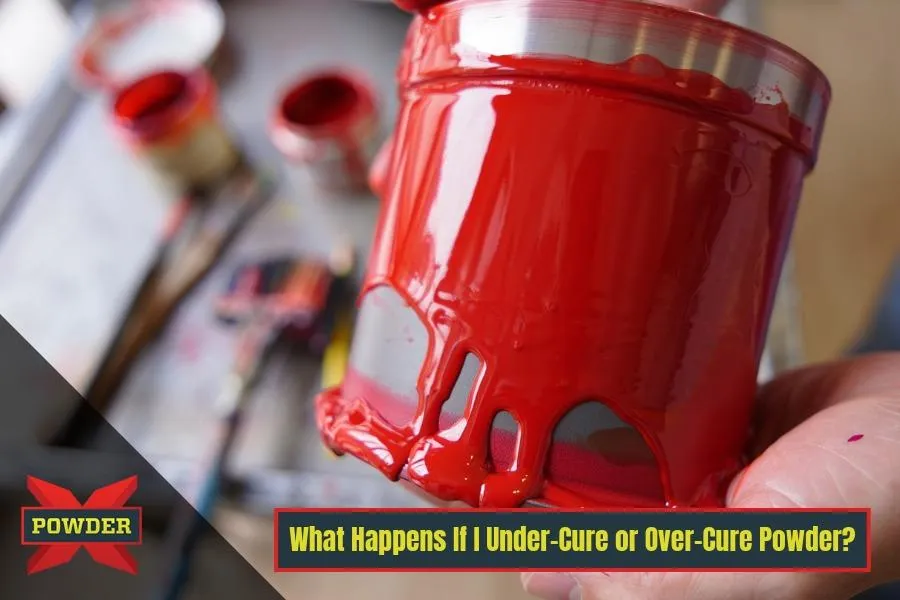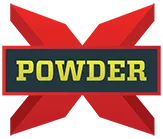
What Happens If I Under-Cure or Over-Cure Powder?
The Costly Truth About Getting It Just “Hot Enough”
Let’s talk about something that quietly kills more powder coating jobs than bad prep, cheap powder, and cheap guns combined: improper curing.
You can do everything right up until that moment, the surface is blasted, your part is grounded, your stroke is perfect, but if you undercure or overcure, the final result might look okay at first…
But then comes the chipping. The fading. The complaints. The callbacks.
And the profits? Gone.
So let’s break it down. What really happens when your powder doesn’t cure right?
And how do you know you’ve nailed it?
First, What Is Curing in Powder Coating?
Curing is not just “baking” powder until it melts.
Curing is a chemical reaction, called crosslinking, where the powder transforms from a dry thermoset resin into a solid, durable finish. And that reaction is time and temperature dependent.
It’s not just about hitting 400°F… it’s about holding that temperature at the metal surface for a specific amount of time.
What Happens If You Undercure?
Undercuring happens when the powder hasn’t reached full chemical crosslinking.
How it happens:
Oven isn’t calibrated (thermocouple reads wrong)
Part didn’t stay in long enough
Thick metal took longer to reach cure temp
Cold spots in oven
What you’ll see:
Finish looks dull or overly matte
Coating chips easily
Poor adhesion, especially at edges
Solvent rub test FAILS (finish wipes off)
Premature UV breakdown (especially with outdoor colors)
Joey’s Warning: “Undercure” doesn’t always mean it looks bad out of the oven. Sometimes, it looks perfect, until it gets handled or shipped.
What Happens If You Overcure?
Overcuring is the silent killer. It happens when powder stays at elevated temperatures for too long.
How it happens:
Leaving parts in too long “just to be sure”
Oven overshoots temp without proper control
Thin parts heat too fast
Poor understanding of part temperature vs air temperature
What you’ll see:
Gloss levels too low (especially in high gloss colors)
Finish appears “yellowed” or scorched
Poor flexibility (cracks on bend tests)
Brittleness and reduced impact resistance
Color drift, especially on bright or metallic colors
Pro Tip: You can’t “double bake” your way to better durability. Once powder hits peak cure, extra time only degrades it.
So What’s the Cure for Bad Curing?
Use a Thermocouple, Not Just a Wall Thermometer
The temp you set isn’t the temp your metal is. A thermocouple placed on the actual part tells you when the substrate hits curing temp.
Don’t guess. Test.
Know Your Powder’s Cure Schedule
Every powder has a different time/temp window. Most standard polyester powders cure at:
10 minutes at 400°F (substrate temp)
But some may require:15 minutes at 375°F
20 minutes at 350°F
Going outside that range changes the finish.
Always check the Technical Data Sheet (TDS) for your specific powder.
Calibrate Your Oven Monthly
Most ovens drift over time. A 25°F swing can wreck a finish. Run a 9-point temp profile with test panels if possible, and verify the uniformity of heat distribution.
Joey’s Real Talk: Don’t Bake Guesswork Into Your Process
I’ve seen businesses lose thousands and customers because of bad curing. Why? Because they “eyeballed it,” relied on the powder “flowing out,” or assumed “longer is better.”
“The part doesn’t care what the oven says. It only cares what it feels.”
If you’re in this for the long game, repeatable quality, minimal rework, customer trust, then curing isn’t a side note. It’s a core process.
Final Word: Curing Is Where the Money’s Made
The real profit in powder coating isn’t in the spray gun, it’s in the oven.
Every rejected part, every returned job, every redo comes back to this: Did you cure it right?
Master the cure. And you master consistency, durability, and profitability.
